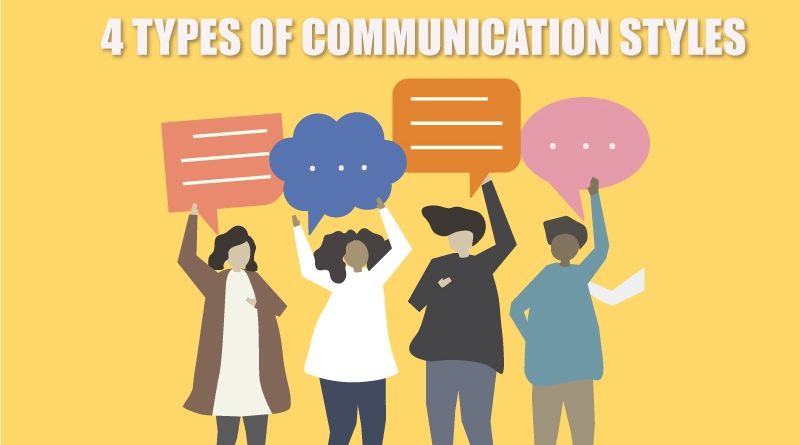4 Types of Communication Styles; Which One is The Best?
We all have our own unique communication style. This is a way in which they interact and exchange information with others.
While each individual has their own way of communicating a message. We can divide them under four basic communication styles: passive, aggressive, passive-aggressive and assertive.
This division into four basic communication style helps us understand each broad category of communication style. It helps us to know why individuals use them and strengths and weakness associated with each of them. It is important to note that none of them is the best communication style because we often use a mix of communication styles.
However one out of the four communication styles is our dominant one. We need to break them down to better understand the characteristics of each style. Also, understand the common use and elements that make them unique.
4 BASIC COMMUNICATION STYLES
1. PASSIVE
Individuals who use the passive communication style often act indifferently, yielding to others. The major characteristic of passive communicators is that it fails to express their feelings, needs or wants, allowing others to express themselves.
Frequently, a passive communicator’s lack of outward communication can lead to misunderstanding, anger build-up or resentment. Some consider it to be a better communication style during a difference of opinion or conflict. However, research has shown that this is not the case.
Other characteristics include lack of eye contact, poor body posture and an inability to say “no.” Passive communicators also act in a way that states “people never understand my feelings.”
But passive communicators are also easy to get along with as they follow others and “go with the flow.”
Examples of phrases that those who use a passive communication style would say or may believe include:
“It really doesn’t impact me much.”
“It is okay, I can manage”
2. AGGRESSIVE
It’s often apparent when someone communicates in an aggressive manner. You’ll hear it. You’ll see it. You may even feel it. There is also multiple tell-a-talesignsn of aggressive communication, like facial expression and body language.
The aggressive communication style is emphasized by speaking in a loud and demanding voice, maintaining intense eye contact and dominating or controlling others by blaming, intimidating, criticizing, threatening or attacking them, among other traits.
Aggressive communicators often issue commands, ask questions rudely and fail to listen to others. But they can also be considered leaders and command respect from those around them.
Examples of phrases that an aggressive communicator would use include:
“I’m right and you’re wrong.”
“I’ll get it done matter what.”
“It’s completely your fault.”
3. PASSIVE-AGGRESSIVE
Passive-aggressive communication style users appear passive on the surface, but within he or she may feel powerless or stuck, building up a resentment that leads to seething or acting out in subtle, indirect or secret ways.
Most passive-aggressive communicators will mutter to themselves rather than confront a person or issue. They have difficulty acknowledging their anger, use facial expressions that don’t correlate with how they feel and even deny there is a problem.
Passive-aggressive communicators are most likely to communicate with body language or a lack of open communication to another person, such as giving someone the silent treatment, spreading rumors behind people’s backs or sabotaging others’ efforts. Passive-aggressive communicators may also appear cooperative, but may silently be doing the opposite.
Ultimately, passive-aggressive communicators are aware of their needs, but at times struggle to voice them.
Examples of phrases that a passive-aggressive communicator would use include:
“That’s fine with me, but don’t be surprised if someone else gets mad.”
“Sure, we can do things your way” (then mutters to self that “your way” is stupid).
It one of the least desired of the four styles of communication. You need to avoid it as much as possible.
4. ASSERTIVE
Regarded by many to be the most effective form of communication, the assertive communication style features an open communication link while not being overbearing. Assertive communicators can express their own needs, desires, ideas, and feelings, while also considering the needs of others. Assertive communicators aim for both sides to win in a situation, balancing one’s rights with the rights of others.
Assertive communication does not include imposing your own opinion on others as may be in the case of aggressive communication styles. But it also is not afraid to put forward reasonable expectations in a positive principled way.
Assertive communicators can express their own needs, desires, ideas, and feelings, while also considering the needs of others.
Examples of phrases an assertive communicator would use include:
“We are equally entitled to express ourselves respectfully to one another.”
“I realize I have choices in my life, and I consider my options.”
“I respect the rights of others.”
How to Become an Assertive Communicator
Understanding how others communicate can be key to getting your message across to them.
STEPS TO DEVELOP ASSERTIVE COMMUNICATION STYLE
- Take ownership of your action
- Maintain eye contact
- Avoid blaming others
- Learn to say “no” when appropriate. It is a real skill, develop it
- Voice your needs and desires confidently without being ashamed. Don’t be unreasonable though
- Establish Yourself as a Key Communicator
Now that you’ve learned about the four basic communication styles, it is very important that you pay attention, practice and analyze different communication styles.

